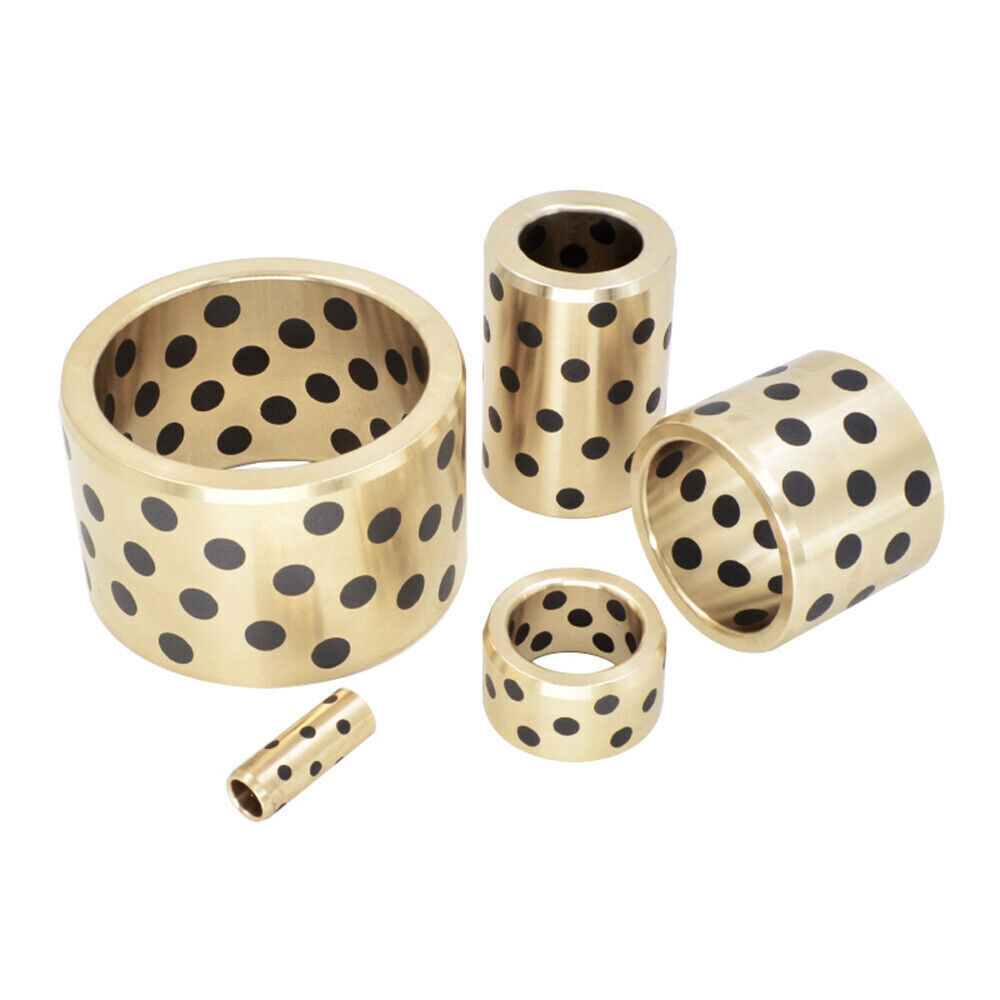When it comes to selecting the right material for bushings, brass often stands out as a popular choice. But why is brass so frequently used for this purpose? To answer this question, we need to delve into the unique properties of brass and how they contribute to its suitability for bushing applications.
Brass is an alloy made primarily of copper and zinc, with copper typically comprising around 66% of the mixture and zinc about 34%. The proportions of these elements can be adjusted to achieve different colors, as well as varied mechanical, electrical, acoustic, and chemical properties. However, the copper content usually remains higher, giving brass its distinct characteristics.

Both brass and bronze belong to a category of materials known as "red metals" due to their reddish hue. While they share similarities, they also have key differences. Bronze bushings are known for their hardness and strength, making them ideal for applications that demand durability and resistance to wear. Brass bushings, on the other hand, are softer and more pliable, making them more prone to deformation or breaking under extreme stress. Despite this, brass bushings possess a unique set of attributes that make them an excellent choice for many applications.
The flexibility of brass bushings is like the bending of a skilled archer's bow—strong, yet yielding just enough to adapt under pressure. This flexibility allows brass bushings to handle high loads and temperatures without deforming or wearing down too quickly. Brass bushings offer good strength and hardness while maintaining ductility, making them versatile in various environments.
One of the key features of brass is its anti-galling properties, which provide superior resistance against corrosion. This makes brass bushings particularly suitable for use in moving parts that experience regular friction. Additionally, the malleability of brass allows it to be shaped into complex designs, enabling easy customization to meet specific requirements.
Brass bushings are also valued for their excellent electrical conductivity, thanks to their low resistivity rating. This makes them ideal for applications involving electricity at relatively high currents. Whether used in hydraulic or pneumatic systems, brass bushings perform reliably without any notable issues, further demonstrating their versatility.
Another significant advantage of brass bushings is their cost-effectiveness. Compared to other materials like bronze or steel, brass bushings are often less expensive. This makes them an attractive option in scenarios where budget constraints come into play without compromising on performance.
Brass bushings are used in a wide range of applications due to their versatility, durability, and conductive properties. Here are some common applications:
1. Automotive Industry:
• Engine Components: Brass bushings are used in engines for camshafts, crankshafts, and other rotating components to reduce friction and wear.
• Transmission Systems: They help in smooth operation by reducing friction in gearboxes and transmissions.
2. Electrical Industry:
• Electrical Connectors: Due to their excellent electrical conductivity, brass bushings are used in connectors and terminals where reliable electrical connections are crucial.
• Switches and Relays: Brass bushings are often found in electrical switches and relays to ensure smooth operation and longevity.
3. Plumbing and HVAC Systems:
• Fittings and Valves: Brass bushings are commonly used in plumbing systems for their corrosion resistance and ability to withstand high temperatures.
• Air Conditioning Systems: They are used in compressors and other moving parts to ensure smooth operation under varying loads and conditions.
4. Industrial Machinery:
• Bearings and Shafts: Brass bushings are used in industrial machinery to support shafts and reduce friction between moving parts.
• Pumps and Compressors: Their ability to withstand high loads makes them ideal for use in pumps and compressors.
5. Marine Applications:
• Propeller Shafts: Brass bushings are used in marine environments due to their resistance to corrosion, making them ideal for propeller shafts and other underwater components.
• Steering Systems: They are also used in marine steering systems where reliability and durability are essential.
6. Aerospace Industry:
• Landing Gear: Brass bushings are used in the landing gear of aircraft for their ability to handle high loads and resist wear.
• Actuators and Controls: They are also used in actuators and control mechanisms where precision and durability are critical.
7. Hydraulic and Pneumatic Systems:
• Cylinders and Pistons: Brass bushings are used in hydraulic and pneumatic cylinders to reduce friction between the piston and cylinder wall.
• Valves and Pumps: They are also used in valves and pumps to ensure smooth operation and longevity.
In conclusion, the use of brass in bushing applications is driven by a combination of its unique properties. Brass bushings are flexible, cost-effective, corrosion-resistant, and versatile, with excellent electrical conductivity. These attributes make brass an ideal material for bushings in a wide range of applications, from industrial machinery to electrical systems. Whether you're dealing with high loads, friction, or electrical currents, brass bushings offer a reliable and economical solution that meets diverse needs.
As a professional brass bushing manufacturer and self-lubricating system provider, we would be pleased to advise you individually, and you are also welcome to send your inquiry to sales@zjbearings.com.